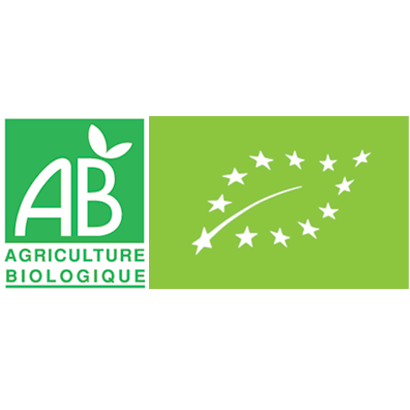You’ve been invited to dinner at the home of friends… whose commitment to sustainable development and biodiversity you know…
You’d like to bring along a bottle of wine in line with their convictions, but between biodynamic and natural organic wines you’re feeling lost.
How to find your way around?
It’s both simple and complicated.
What is organic?
Organic farming is an agricultural production method governed by European regulations.
It is therefore an official sign of quality in the same way as the Appellation d’Origine Protégée (AOP).
Organic farming comes under the INAO (Institut national de l’origine et de la qualité).

Organic production therefore implies a set of specifications and rules that obviously apply to viticulture. Since August 1, 2012, organic production rules have applied to vine cultivation AND winemaking (until then, only grapes were concerned). This means that we can now refer to our wines as “organic”, and affix the AB (optional) and European (compulsory) logos to their containers.
The production of organic grapes therefore requires :
- a 3-year conversion period
- the exclusive use of natural substances essential for vineyard protection (copper, sulfur, plant and mineral extracts). The doses that can be used are strictly limited and checked every year.
- the use of green manure from plant and/or animal compost
- maintain and improve soil fertility by mechanical means, without the use of chemical weedkillers
In the same vein, organic vinification also has its own requirements and rules, based on the following “credo”: “Vinify with respect for the true nature of the product”.
This means:
- the use of 100% organic agricultural ingredients and certain organic inputs (living organisms or elements of biological origin), if available (there are around 80!)
- Restrictions or bans on the use of certain physical processes
- a restricted list of additives and oenological aids strictly necessary for the quality of organic wines (e.g. ban on sorbate and PVPP (synthetic glue))
- limited doses of sulfur (SO²), systematically analyzed (roughly speaking, authorized doses are between 30 and 50 mg/l less than “conventional” wines)
But how do you recognize/identify an organic wine?
There are currently 2 official labels:

- the European organic label and its green leaf-shaped logo
- organic farming label (AB)
There are also other, “unofficial” labels created by players who feel that European standards do not go far enough:
- Nature et progrès: France’s first organic label, created in 1964, with more stringent specifications, particularly concerning the amount of sulphur used.
- Bio cohérence: private label created by a community of producers who also felt that the AB specifications were not strict enough.
Note: there are currently 6 certifying bodies that monitor compliance with standards. The best-known of these is ECOCERT.
An organic approach is all well and good, but for some it’s just not enough. It is necessary to go further in the approach by having a more global vision, that is what biodynamics advocates.
What is biodynamics?
Above all, it’s a concept that sees arable land as a living, evolving being. Biodynamic agriculture aims to ensure the health of the soil and plants to provide healthy food for animals and people. This “philosophy” was born in the 1920s, under the impetus of an Austrian philosopher (Rudolph Steiner). Concerned by the advent of chemical fertilizers, the result of the productivist evolution of agriculture, he decreed 3 major principles that still govern biodynamic agriculture today:
- 1/ Both the farm and the private garden must be considered as a single, evolving entity whose needs must be understood.
- 2/ Soil fertilization must be carried out using biodynamic preparations (without hazardous chemicals). We therefore apply the principle of recycling waste and valuing the life cycle.
- 3/ special attention is paid to the rhythm of nature’s seasons and the influence of the stars (sun, moon, planets…). So astrology is invading agriculture, giving biodynamics an “esoteric” dimension!
In 2022, nearly 15,000 hectares of farmland in France were certified biodynamic, representing around 6% of the total agricultural area. This is a small number, but it can be explained by the additional constraints imposed by this approach. The wine industry accounts for 2/3 of this surface area. Applied to viticulture, the principles of Biodynamics involve :
- in the vineyard – no synthetic chemicals, use of plant-based preparations to energize the soil and protect against disease. Strict adherence to the lunar calendar
- in the cellar – very limited number of inputs and restricted use of sulfites (red wine 60 mg/l, white wine 90 mg/l)







